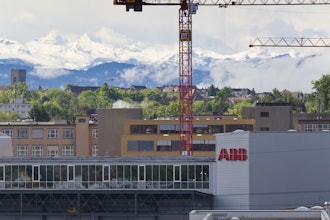Farris Automated Systems is a custom machine builder based in Wales, Wis. The company's latest creation is a Cage Assembly Machine for a Tier 1 auto supplier.
The machine assembles components used in the automotive industry; specifically, it places the bearings in the race that makes your seat slide. While these types of components are in every car in the U.S., these cages are destined for Suburbans, Tahoes and Escalades. The Escalade even gets an extra one.
The Cage Assembly Machine will make 10 million parts per year. The challenge for Farris was the variability in the 15 parts due to the unavoidable nature of plastic parts. The bearing races are injection molded, so the tolerances change with temperature and humidity. As a result of the variances, the ball bearing housing needed to be re-located on each part.
The machine is inserting multiple, various-sized ball bearings into sockets with 35 pounds of force, all in three seconds or less. It's an incredible amount of engineering, and for a car feature that is more or less taken for granted.
Here's how it works:
The Cage Assembly Machine is capable of assembling 15 different styles of bearing race, placing six different sizes of bearing that range from 4.8 mm to 6 mm in diameter.
The machine has two bulk feeder bowls at the top that feed bearings into quality control rollers that measure the diameter of the bearing down to 0.1 mm. Steel rollers drive the balls down a V-shaped grove. If the ball drops early, it's too small; if it drops late, it's too big.
From the rollers, the balls are moved by diverters into two different lanes.
At the same time, the molded parts are being fed into the machine by operators. An infeed mechanism sets the timing as the parts are loaded in, a laser sensor locates each hole, and an injector pushes the bearings into the rail, in three seconds, about 10 million times each year.
To pull it off, it took a lot of machine programming. A large bearing race has eight large bearings and five small bearings in the part. A camming mechanism loads a ball every .007 seconds and if the insertion is off by 0.003", the piece is shot.
Quality is controlled in the machine. Keyence LVDTs make sure each bearing is present and pressed in by measuring the profile and height of each bearing. Further down the line, two Cognex cameras take additional measurements for a final quality decision.
Approved parts are swept off the belt, and into a case, the few bad parts go rolling out the back.
Farris's customer demanded zero defects, with improved reliability, quality, and throughput. Now, the company has a versatile machine that can put together multiple versions of a part through a single machine, and it's going to replace a process that had long tool changes.






















